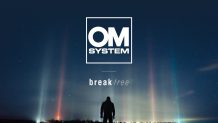To mark this breakthrough, the inventor of HSDP, Dieter Kirchner, and Heidelberger Druckmaschinen AG (Heidelberg) are organizing an exhibition of around 50 photographs at the Print Media Academy in Heidelberg from July 20-24, 2009. These will include contributions from notable photographers, with all photos printed on Heidelberg presses. According to Heidelberger, the necessary quality is achieved by ensuring the right interplay between press, software, and consumables – ink in particular.
In High Definition Skia Photography, negatives, slides or raw data are recorded in two different digital data sets. An electronic darkroom program uses this data to calculate all gamma curves that are of relevance to the developing process for printing purposes. Based on a defined digital image, the photographer adjusts the paper gradation as he previously did in the darkroom. Prints are produced using special inks adapted to the developer substances. This also turns the press into a darkroom, the key difference being that the printing process is reproducible. This printing technology is based on a new standardization process for uniform, optimized color separation and the design of the new Heidelberg presses. As a result, it is possible to print even short runs with barely perceptible fluctuations in tone.
Heidelberger points out that, since conventional photo paper only has a limited image gamut, around a third of the optical image gamut is cut off. HDSP, on the other hand, exhibits an image gamut that lies at the limit of visual perception, the company said, adding that all visible components captured by the camera are transferred to the print.






